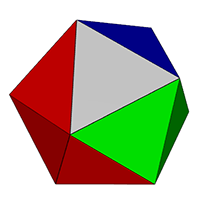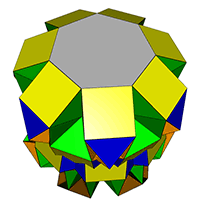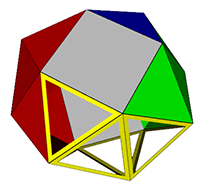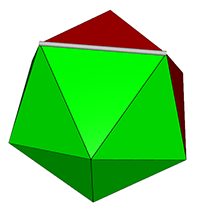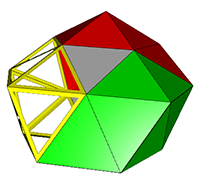Seed Polyhedron
|
Seed Edge
|
Seed Face
|
Tetrahedron
|
3-3 tri
(notes 1 and 2)
|
|
Octahedron
|
3-3 tri (note
3) |
3 tri (notes
1
and
2) |
Icosahedron
|
3-3 tri (note
2)
More
|
3 tri (note
2) More
|
Cube
|
4-4 exo endo
More
|
4 prism
(note 4) |
Dodecahedron
|
5-5 exo
endo
|
5 exo
endo More
|
Cuboctahedron
|
|
3 exo
endo
(note 5); 4
exo endo
More
|
Icosidodecahedron
|
|
3 exo endo
More; 5 exo endo
More
|
Truncated
Tetrahedron
|
6-6 cop |
3 cop (note 6)
|
Truncated
Octahedron
|
6-6 exo C-exo endo C-endo
|
4 exo endo
; 6(T) cop
|
Truncated
Icosahedron
|
6-6 exo C-exo endo |
5 exo endo
; 6(T) exo endo |
Rhombicuboctahedron
|
|
3 exo
endo 412(T)
; exo
endo ; 46 exo
endo
|
Rhomobicosidodecahedron
|
|
3 exo
endo ; 4(T) exo
endo
(note 7); 5 exo
endo
(note 8)
|
Snub
Cuboctahedron
|
324-324
exo endo
(note 9)
|
38
exo endo ; 4 exo endo More |
Snub
Icosidodecahedron
|
360-360
exo
endo |
320
exo endo ; 5
exo
endo More |
